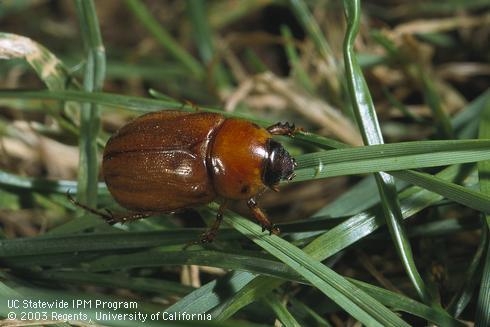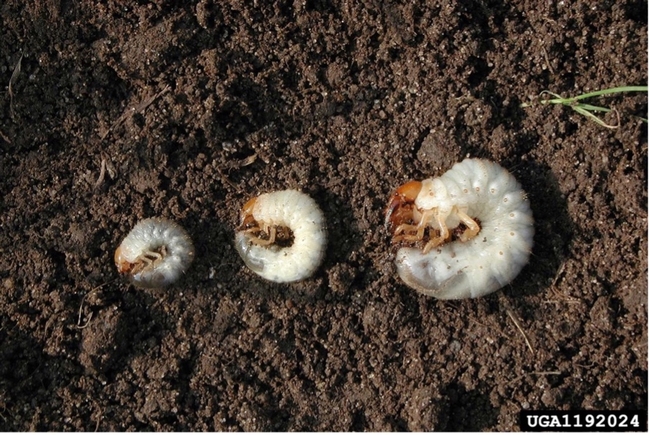While preparing your garden for planting this spring, you may have found white grubs in the soil. Discovering these fairly large, white grubs can be alarming, but they usually won't cause significant plant damage.

Grubs are the soil-dwelling larvae of beetles in the Scarabaeidae family, also simply called scarabs. They are generally curled in a C-shape with whitish bodies and 6 legs. Grubs of some species may be less than 0.5 inch long, while other species may be up to 2 inches. Some grubs feed on living plant material while others do not.
Masked chafer beetle grubs are often what people find in garden beds in California. If you find large grubs in compost, those are likely the larvae of the green fruit beetle (also commonly called figeater beetle and green fig beetle). Japanese beetles are not usually present in California, but there are a few small hot spots under eradication efforts by the California Department of Food and Agriculture.
In most cases, the presence of grubs does not require pesticide treatment and populations of 6 or less per square foot won't cause significant damage. If you notice them in your garden beds, they can be hand-picked and killed. Some may choose to feed them to their backyard chickens or leave them out for wild birds. Beneficial nematodes can be applied to control grub infestations.
To learn more about common white grubs, visit https://ucanr.edu/blogs/blogcore/postdetail.cfm?postnum=56797
